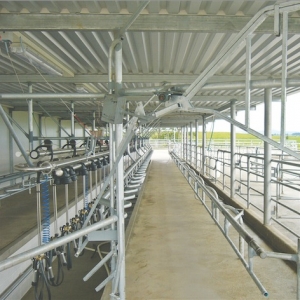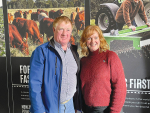IRELAND’S NATIONAL research body Teagasc says dairy farmers need to examine labour use and efficiency.
Speaking at a Teagasc/ ICOS Dairy Expansion Seminar last week, dairy specialist Pat Clarke said that to efficiently use their work time farmers must simplify their operations, provide facilities adequate to their herd size and make timely use of contractors.
Those who start evening milking about 4.30pm are consistently found more labour efficient by having organised themselves between morning and afternoon milkings, he said. Studies have shown that 4.30pm milkings have no detriment to milk yield while allowing time for family and lifestyle.
Clarke emphasised suitable buildings, machinery, equipment and farm infrastructure are important to optimise labour efficiency, in particular adequate milking machine capacity, as milking typically consumes 34% of a dairy farmer’s total working time.
Clarke’s colleague John McNamara, Teagasc’s health and safety officer, cited international research showing the three main farm workplace stressors are long working hours and poor safety conditions, worries about money, and poor health.
McNamara urged farmers to look after their health because of the stress poor health causes, and its impact on income by limiting a farmer’s capacity to farm. He referred farmers to the health booklet ‘Staying Fit for Farming’ on Teagasc’s website. It has also been circulated as hard copy nationwide.
He also reminded farmers of their responsibility to make their farms “a safe and comfortable place to work for everybody.”
At the seminar Peter Byrne, chief executive of Farm Relief Services advised farmers to “gear up for more efficient labour use by looking at farm layout, roadways and buildings and identify changes necessary to improve labour efficiency.”
He outlined labour options including family, direct employment, student, contractor, Farm Relief Services and various collaborative farming arrangements.
“Each comes with advantages and disadvantages and the first thing every farmer should do is to identify which option suits their situation best.”
If employing extra labour he advised, “be aware of your legal requirements relating to the provision of a contract of employment, a payslip and a method for recording hours worked.”
Tom O’Dwyer, Teagasc’s head of dairy knowledge transfer stressed the importance of getting labour efficiency right before adding more cows. Currently the most labour efficient farms in Ireland manage 100 livestock units per labour unit, he pointed out.
“This has to be the benchmark in labour efficiency. But it is also important that dairy expansion does not take place at the expense of the farmer’s physical, mental and social health.”
The Farmer Health Booklet ‘Staying Fit for Farming’ is available at http://www.teagasc.ie/publications











